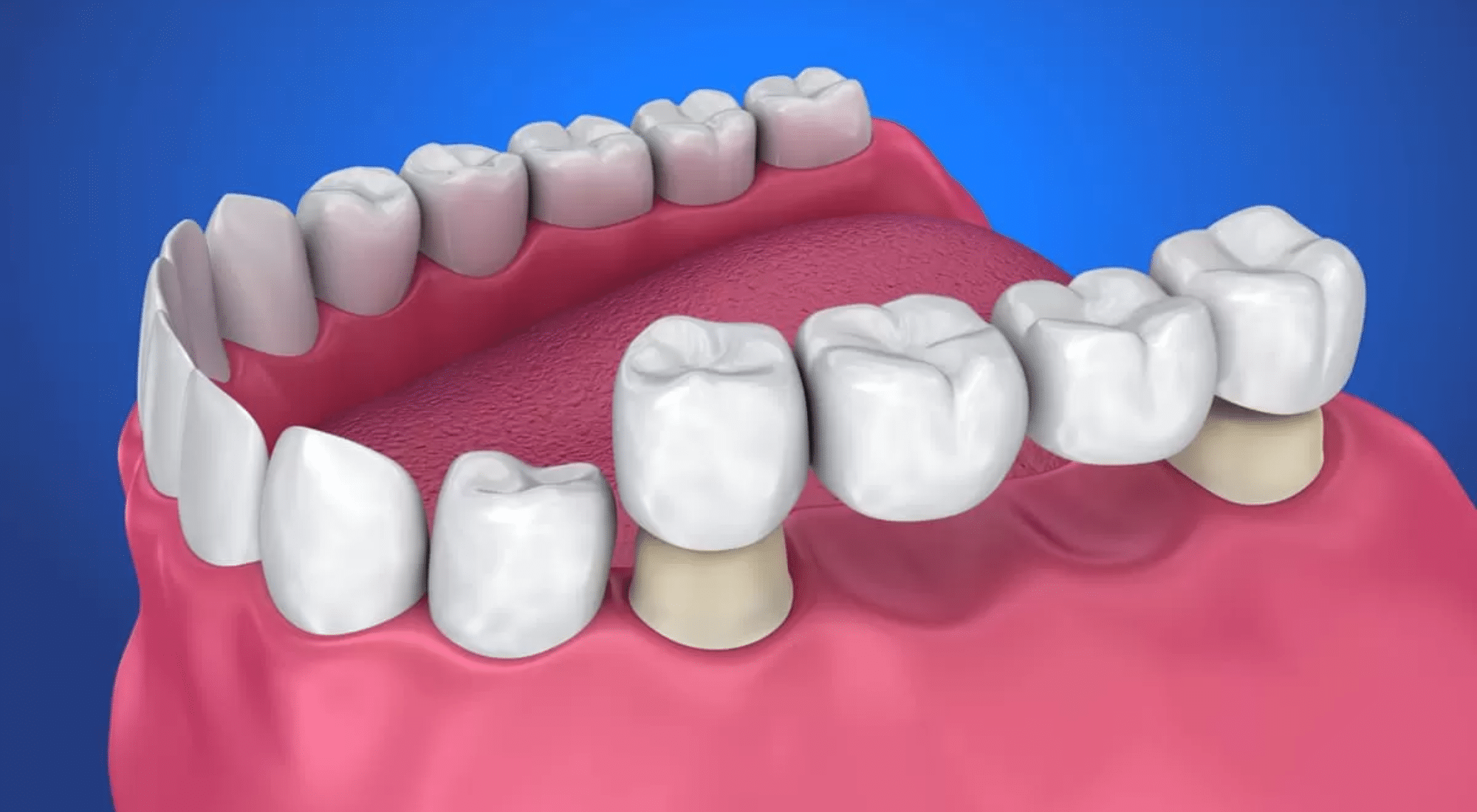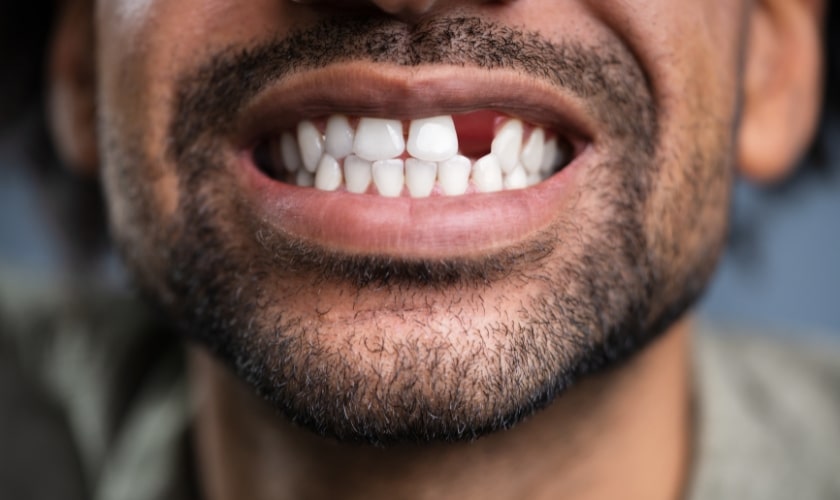245 11th Ave NE Hickory, NC 28601
5 Immediate Actions to Take When a Dental Bridge Falls Out

When a dental bridge falls out, acting quickly and calmly is crucial. A fallen dental bridge can cause discomfort, impact your oral health, and affect your ability to eat and speak properly. Knowing the immediate steps to take can help you manage the situation effectively and prevent further complications.
This blog will guide you through five immediate actions to take when a dental bridge falls out. From retrieving and inspecting the bridge to cleaning the area and contacting your dentist, these steps will ensure you handle the situation with confidence and care. By following these tips, you can minimize discomfort and protect your oral health until you receive professional dental care.
1. Stay Calm and Retrieve the Bridge
When your dental bridge falls out, the first step is to stay calm. Panicking can lead to hasty actions that might damage the bridge or harm your teeth. Taking a moment to compose yourself ensures that you handle the situation with care and precision.
Steps to Safely Retrieve and Preserve the Fallen Bridge:
- Locate the Bridge: Carefully find the fallen bridge. Check your mouth, clothes, or the area around you to ensure you retrieve it promptly.
- Handle with Care: Once you find the bridge, pick it up gently. Avoid using force, as the bridge may be delicate and susceptible to damage.
- Inspect for Damage: Quickly inspect the bridge for any obvious signs of damage. Look for cracks, chips, or broken pieces that might indicate it needs repair.
- Rinse with Water: Rinse the bridge with lukewarm water to remove any debris or food particles. Do not use soap or harsh chemicals.
- Store Safely: Place the bridge in a clean container or a small plastic bag. If you have a denture case, that works perfectly. Keep it safe until you see your dentist.
Remaining calm and following these steps will help you preserve the dental bridge for potential reattachment or repair by your dentist.
2. Inspect the Dental Bridge and Surrounding Teeth
After retrieving your dental bridge, inspect it and your mouth for any damage. This step is crucial for understanding the extent of the issue and determining the next course of action.
Checking for Damage to the Bridge:
- Look for any cracks, chips, or broken pieces on the bridge. A damaged bridge may need repair or replacement.
- Inspect the parts that connect the bridge to your teeth. These should be intact and free of debris.
- Any unusual discoloration might indicate underlying issues or contamination.
Assessing the Condition of the Surrounding Teeth and Gums:
- Inspect the Teeth: Check the teeth that support the bridge. Look for signs of tooth decay, damage, or sensitivity.
- Check for Gum Irritation: Examine the gums around the area for redness, swelling, or bleeding. These symptoms can indicate gum disease or infection.
- Note Any Pain: Pay attention to any pain or discomfort in the area. This could be a sign of underlying issues that need immediate attention.
3. Rinse and Clean the Area
Maintaining oral hygiene becomes crucial when your dental bridge falls out. Proper cleaning can prevent infection and ensure a healthier environment for your teeth and gums until you see your dentist.
Importance of Maintaining Oral Hygiene:
Prevent Infection: Cleaning the area helps remove bacteria and debris, reducing the risk of infection.
Promote Healing: A clean mouth supports the healing of any irritated or damaged tissues.
Ensure Comfort: Keeping the area clean can alleviate discomfort and reduce inflammation.
How to Properly Rinse and Clean Your Mouth and the Bridge?
- Use warm water to rinse your mouth gently. This helps remove loose debris and soothes irritated gums.
- Mix a teaspoon of salt in a cup of warm water and rinse your mouth thoroughly. Saltwater has natural antibacterial properties.
- Carefully brush your teeth around the affected area with a soft-bristled toothbrush. Avoid vigorous scrubbing to prevent further irritation.
- Rinse the bridge under lukewarm water to remove any food particles or debris. Avoid using toothpaste or harsh chemicals.
- Use an alcohol-free mouthwash to prevent further irritation and dryness in the affected area.
4. Avoid Certain Foods and Beverages
When your dental bridge falls out, avoid certain foods and beverages to prevent further damage and discomfort. Careful dietary choices can protect your exposed teeth and gums until the bridge is fixed.
Foods and Drinks to Avoid:
- Hard Foods: Steer clear of nuts, hard candies, and raw vegetables, which can damage exposed teeth.
- Sticky Foods: Avoid chewing gum, caramel, and other sticky foods that can adhere to your teeth and cause issues.
- Sugary Foods and Drinks: Limit sweets, sodas, and other sugary items to prevent decay and irritation.
- Very Hot or Cold Beverages: Extreme temperatures can cause sensitivity and discomfort in exposed areas.
Recommendations for Safe Dietary Choices:
- Soft Foods: Opt for soft foods like mashed potatoes, yogurt, and scrambled eggs that are gentle on your teeth and gums.
- Cooked Vegetables: Choose cooked or steamed vegetables that are easier to chew and won’t cause damage.
- Lean Proteins: Eat soft proteins like fish, chicken, and tofu, which provide nutrition without strain.
- Water and Herbal Tea: Drink plenty of water and herbal tea to stay hydrated without causing irritation.
5. Contact Your Dentist Immediately
Seeking professional help promptly is crucial when your dental bridge falls out. Your dentist can properly reattach or replace the bridge, ensuring your oral health and comfort. Don’t delay in contacting your dentist for an emergency appointment.
Importance of Seeking Professional Help:
Prevent Further Damage: Professional care prevents further damage to your teeth and gums.
Restore Function: A dentist can quickly restore your ability to chew and speak properly.
Alleviate Pain: Addressing the issue promptly reduces discomfort and pain.
How to Explain the Situation and Schedule an Emergency Appointment?
- Describe the Incident: Clearly explain how and when the bridge fell out. Mention any symptoms like pain or swelling.
- Share Bridge Condition: Inform the dentist about the bridge’s condition, including any visible damage or changes.
- Mention Cleaning Steps: Let your dentist know you’ve rinsed and stored the bridge safely.
- Request an Urgent Appointment: Emphasize the urgency of the situation and request the earliest available appointment.
- Follow Instructions: Follow any interim care instructions provided by the dentist to manage pain and protect your teeth.
In conclusion, when a dental bridge falls out, taking immediate and careful steps can protect your oral health and minimize discomfort. By staying calm, retrieving and inspecting the bridge, cleaning the affected area, avoiding harmful foods, and contacting your dentist promptly, you can effectively manage the situation. These actions ensure that you maintain good oral hygiene and prepare for professional dental care. Prompt attention and proper handling of your dental bridge can facilitate a smoother, quicker resolution, allowing you to return to normalcy with minimal disruption. Remember, your dentist is your best resource for restoring your dental bridge and overall oral health.


